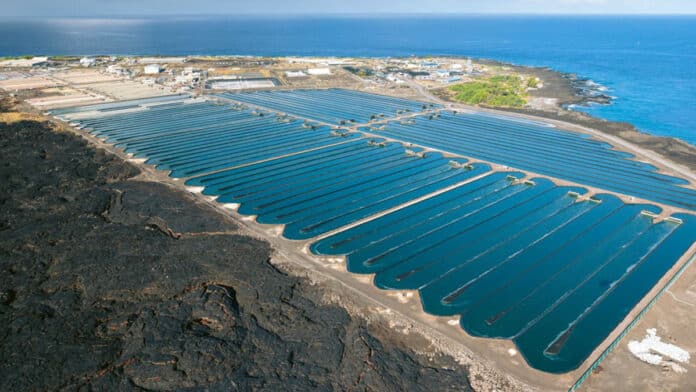By mid-century, society will need to significantly intensify its food production system’s output while simultaneously reducing its detrimental impacts on climate, land use, freshwater resources, and biodiversity.
A new study published in the journal Oceanography speculates this future global food production problems could be solved by growing nutritious and protein-dense microalgae (single-celled) in onshore, seawater-fed aquaculture systems.
Currently, agriculture is the backbone of food production, but with high environmental costs and many greenhouse gas emissions, there is much to improve. Marine aquaculture is underdeveloped and also has environmental impacts.
“We just can’t meet our goals with the way we currently produce food and our dependence on terrestrial agriculture,” said Charles Greene, professor emeritus of earth and atmospheric sciences and the paper’s senior author.
This is where onshore aquaculture systems come in. Cornell University researchers argue that algae growth in onshore aquaculture farms can make a big difference. The researchers looked at how growing algae onshore could fill the projected gap in society’s future nutritional demands. Also, the environmental footprint of these novel farms would reduce deforestation and require no soil or fertilizer.
“We have an opportunity to grow food that is highly nutritious, fast-growing, and we can do it in environments where we’re not competing for other uses,” explained Greene. “And because we’re growing it in relatively enclosed and controlled facilities, we don’t have the same kind of environmental impacts.”
Cornell researchers used GIS-based models to predict yields based on annual sunlight, topography, and other environmental and logistical factors. The model results reveal that the best locations for onshore algae farming facilities lie along the coasts of the Global South, including desert environments.
Marine microalgae are a large, untapped source of high-quality dietary protein. Marine microalgae also provide nutrients lacking in vegetarian diets, such as essential amino acids and minerals found in meat and omega-3 fatty acids often sourced in fish and seafood. Algae grow ten times faster than traditional crops and can be produced in a manner that is more efficient than agriculture in its use of nutrients.
By reducing agriculture’s demand for cropland, growing marine microalgae can also reduce greenhouse gas emissions and biodiversity loss, the researchers said. Also, while algae farming solves many food-related and environmental problems on paper, it can only be successful if people adopt it in diets and for other uses.
Journal reference:
- Charles H. Greene, Celina M. Scott-Buechler, Arjun L.P. Hausner, Zackary I. Johnson, Xin Gen Lei, and Mark E. Huntley. Transforming the future of marine aquaculture: A circular economy approach. Oceanography, 2022; DOI: 10.5670/oceanog.2022.213
